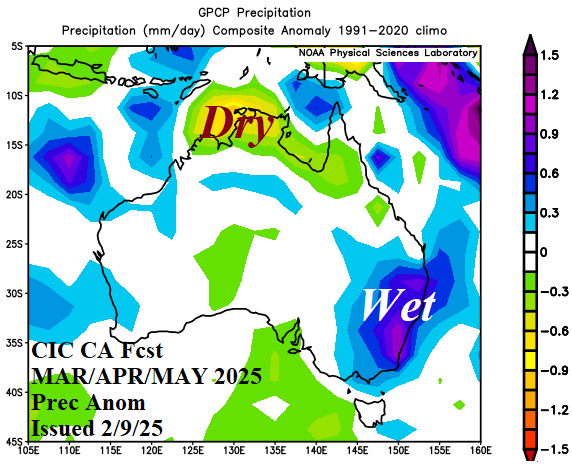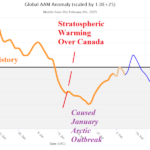
Is There Sudden Stratospheric Warming Ahead in Early March?
02/06/2025, 1:53 pm EST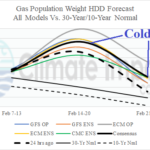
-AO/-NAO Pattern Keeps East Half of U.S. Cold Through February
02/11/2025, 6:58 am ESTExecutive Summary: The Australia season 1-4 ahead outlook is updated. The forecast is valid for meteorological autumn 2025 through summer 2025-26. The forecast is based on an ENSO climate favoring La Nina, neutral Indian Ocean dipole, and the influence of marine heat waves either side of the continent. Forecast highlights include a persistent wet climate in southeastern Australia likely through next summer while next winter is warmer than normal.
Climate discussion: So far, meteorological summer 2024-25 has witnessed a dominant high-pressure ridge over Western Australia and deep low pressure near New Zealand (Fig. 1). The sensible weather since December 1st has featured anomalous heat across all of Argentina except the immediate East Coast where wet weather has dominated. The combination of anomalous heat and dryness so far during the summer season has caused drought to develop in North-central to Interior Southeast Australia (Fig. 2). The prevailing high-pressure pattern across Australia is linked to warm SSTA surrounding Australia including a strong marine heat wave (MHW) off the Northwest Coast (Fig. 3). The high-pressure area over Western Australia extends westward to another MHW southeast of Madagascar. Strong high pressure associated with the MHW near New Zealand is located near and east of the Dateline at 60S and compensated for by a deep trough just north of New Zealand. The rainy upper trough has caused the wet climate on the East Coast of Australia. During the meteorological summer 2024-25, La Nina has (slowly) gained intensity, adding to the wet bias on the East Coast.
Looking ahead to Q2/2025, the International Multi-model Ensemble (IMME) projects (slowly) weakening La Nina, a strengthening MHW to the east of Australia, while the MHW northwest of Australia is weaker (Fig. 4). The South Pacific warm hole (SPWH) referred to by Climate Impact Company (CIC) as the Amundsen Sea cool pool generates and becomes intense. Later this year, ENSO shifts to neutral phase while MHW’s remains prominent to the west and southeast of Australia (Fig. 5).
Looking ahead to later 2025 and into early 2026, ENSO phase favors La Nina persistence although forecast confidence is low (Fig. 6). A collection of Nino34 SSTA forecasts by NOAA reveals La Nina weakening by MAR/APR/MAY but redeveloping later this year (Fig. 7). The Indian Ocean dipole (IOD) forecast reveals neutral phase although forecast confidence is low mid-to-late year (Fig. 8).
The constructed analog climate forecast for seasons 1-4 ahead is based on the anticipated SSTA regimes described and their correlation to Australian climate.
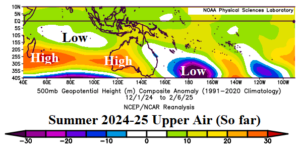

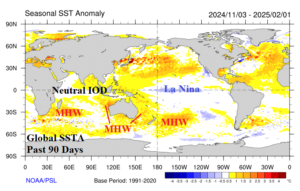
Fig. 1-3: The prevailing upper air pattern across Australia for meteorological summer 2024-25 so far, the JAN-25 Australia soil moisture decile analysis, and the seasonal global SSTA regime.
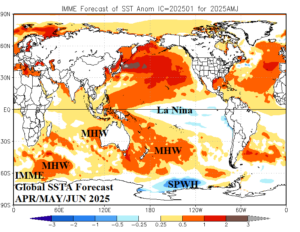
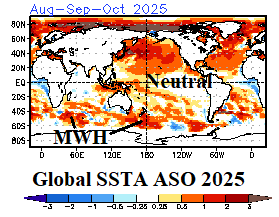
Fig. 4-5: The IMME global SSTA forecast for APR/MAY/JUN 2025 and CFS V2 outlook for AUG/SEP/OCT 2025.
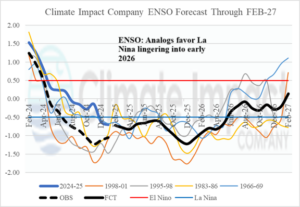
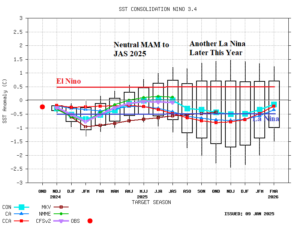
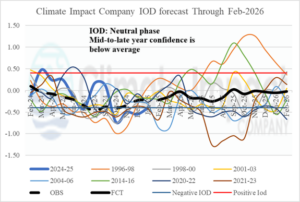
Fig. 6-8: The Climate Impact Company constructed analog forecast of Nino34 SSTA and IOD plus a collection of Nino34 SSTA forecasts by NOAA.
MAR/APR/MAY 2025: Meteorological autumn maintains a wet regime in the East suppressing late season anomalous heat risk. The North Coast is less wet than normal. Late season tropical cyclone risk is greater along the northwest (vs. northeast) coastal region. Overall, the tendency for anomalous warmth, observed during summer weakens in autumn.
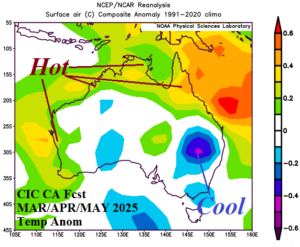
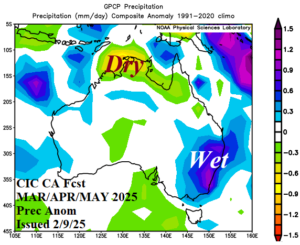
Fig. 9-10: The Climate Impact Company constructed analog temperature and precipitation anomaly climate forecasts for MAR/APR/MAY 2025.
JUN/JUL/AUG 2025: Next winter is milder than normal for most of the continent. A tendency for a La Nina climate to persist maintains the wet risk on the East Coast. The Southwest Coast is (also) wetter than normal.
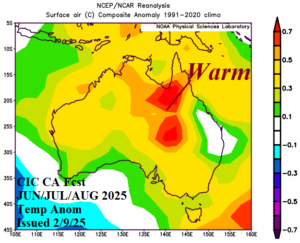
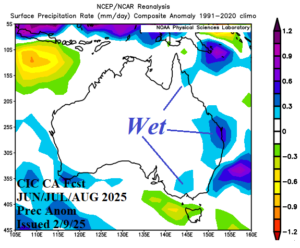
Fig. 11-12: The Climate Impact Company constructed analog temperature and precipitation anomaly climate forecasts for JUN/JUL/AUG 2025.
SEP/OCT/NOV 2025: Next springtime stays wet on the East Coast. La Nina may regenerate/strengthen during that time. The northern continent is warmer than normal.
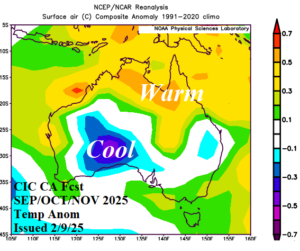
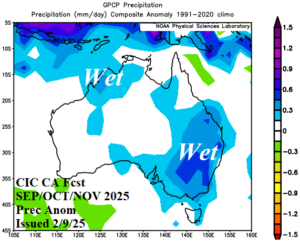
Fig. 13-14: The Climate Impact Company constructed analog temperature and precipitation anomaly climate forecasts for SEP/OCT/NOV 2025.
DEC/JAN/FEB 2025-26: Next summer is likely hotter than normal on the West Coast and across northern areas. The southeast continent will stay wetter than normal suppressing summertime heat risk.
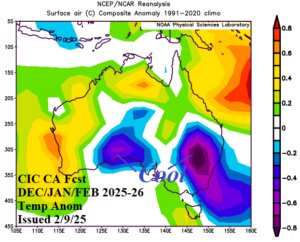
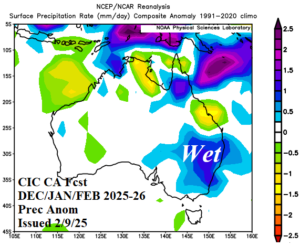
Fig. 15-16: The Climate Impact Company constructed analog temperature and precipitation anomaly climate forecasts for DEC/JAN/FEB 2025-26.

